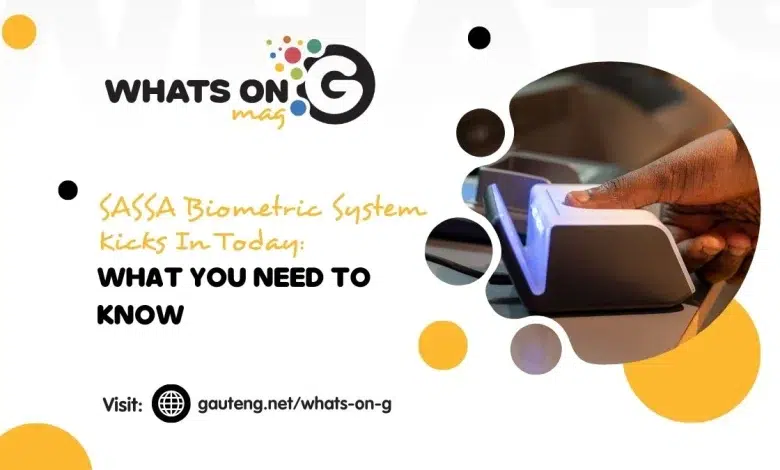SASSA Biometric System Kicks In Today: What You Need to Know

Today, 1 September 2025, the South African Social Security Agency (SASSA) has begun implementing a new mandatory biometric enrolment system for all social grant beneficiaries. This system marks a significant upgrade aimed at strengthening identity verification, combating fraud, and improving the integrity of social assistance programs across South Africa.
RELEVANT ARTICLE: SASSA CEO Says Use of Biometric ID Will Enhance Security
Table of contents
What Is the SASSA Biometric System?
The Beneficiary Biometric Enrolment (BBE) system requires all new and updated social grant applications to include biometric data through fingerprint or facial recognition verification. The biometric data collected will be electronically matched with records from the Department of Home Affairs to confirm the authenticity of grant applicants.
Why Biometric Enrolment?
SASSA introduced this system to address persistent challenges such as forged identity documents and fraud within the social grant system. Biometrics provide a secure and reliable method to verify that social grant recipients are living individuals and eligible for support. This step will help reduce fraud, administration errors, and “inclusion errors” where ineligible individuals have received grants.
How the SASSA Beneficiary Biometric Enrolment (BBE) System Works to Secure Social Grants
The SASSA biometric system, officially known as the Beneficiary Biometric Enrolment (BBE) system, works by capturing biometric data (either fingerprint scans or facial recognition) of social grant applicants and existing beneficiaries. This biometric data is then electronically matched with the Department of Home Affairs’ records to verify identities. Here is how the process works in more detail:
1. Enrolment at SASSA Offices:
Starting 1 September 2025, all grant applicants and beneficiaries visiting SASSA offices will have their biometric data collected. This is mandatory for all new applications and for updating existing beneficiary information.
2. Fingerprint or Facial Recognition:
The primary biometric method is fingerprint scanning. Beneficiaries will place their finger on biometric scanners, which capture a digital fingerprint image. For people with disabilities who cannot provide fingerprints, such as those without fingers or hands, the system uses facial recognition technology as an alternative.
3. Data Matching:
The system cross-checks collected biometric data against the Department of Home Affairs database to confirm whether the fingerprints or facial features match the official identification records. This ensures that the person applying or updating details is who they claim to be.
4. Fraud Reduction:
The system prevents fraudulent claims, including attempts with fake or forged IDs. If the biometric data does not match, applicants must update their identity details with Home Affairs before receiving benefits.
5. Virtual Verification for SRD Grant:
Specific grants like the Social Relief of Distress (SRD) grant utilize facial recognition verification online, allowing applicants to verify their identity remotely through links sent to them.
6. Review Process for Non-Enrolment:
The system flags applications without biometric data and sends them for review, notifying applicants to complete enrolment as soon as possible.
7. Infrastructure and Training:
SASSA has equipped around 80% of its offices with the necessary biometric scanners and infrastructure. Staff have undergone training to ensure smooth capture and verification during enrolment.
8. Beneficiary Support:
SASSA provides support for beneficiaries through a toll-free number, WhatsApp services, and its website to assist with biometric enrolment queries or challenges.
This biometric system is part of a broader effort to modernise grant administration, protect beneficiaries’ identities, and enhance the integrity of social grant payments.
Preparations for Rollout
SASSA has equipped all its offices nationwide with the infrastructure required to capture biometric data. Staff underwent extensive training throughout August to ensure a smooth and efficient rollout. Approximately 80% of offices are already prepared to offer biometric enrolment services.
What This Means for Beneficiaries
Grant recipients are encouraged to visit their nearest SASSA office to enrol their biometrics promptly if they have not already done so. The biometric system increases protection against identity theft and fraud, ultimately helping safeguard social grants for those who genuinely need them.
Support and Assistance
For questions or assistance, beneficiaries can contact SASSA via:
- Toll-free number: 0800 60 1011
- WhatsApp service for grant inquiries
- Official SASSA website
How the System Works
Starting today:
- All grant applications captured and approved must include biometric fingerprint or facial recognition data.
- Applications without biometric data will be flagged for review, and applicants will be notified to complete the biometric enrolment process.
- Biometric data collected is matched against Home Affairs records to ensure accuracy.
- Alternative options are available for beneficiaries with disabilities who may be unable to provide fingerprints.
Safety & Security
This biometric enrolment system is the beginning of a broader digital transformation to make grant administration more secure, efficient, and transparent. Over time, SASSA plans to decommission many manual forms, moving towards a more paperless, technology driven operation.



